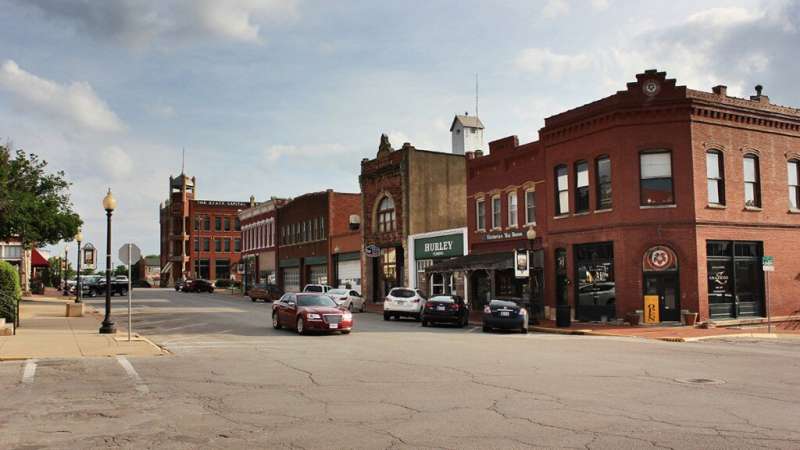Social Media Coordinator and Staff Writer
Jun 28, 2022 10:30 AM

A recent rise in the number of earthquakes experienced in Texas over the last decade are likely due to oil and gas production, including the highly contentious fracking, suggests a new study. Tracking all of the earthquakes of magnitude 1.5 and above from 2017 to 2020, the study found almost 70 percent of them were directly linked to activity in oil and gas, whether it be direct hydraulic fracturing, or dumping the wastewater into geological formations.
The research, which was published in Seismological Research Letters, should act help production companies to reduce their impact on the environment and seismological activity, according to the researchers.
“This paper shows that we now know a lot about how oil and gas activities and seismic activity are connected,” said co-author Alexandros Savvaidis in a statement.
“The modeling techniques could help oil and gas producers and regulators identify potential risks and adjust production and disposal activity to decrease them.”
Hydraulic fracturing is the process of extracting natural gas and oil from often deep pockets under the Earth’s surface by pumping fluids down wells, which causes fractures in the rock formations adjacent to them. The pressure then forces the fluid – now called formation water – back up and sand or another incompressible material is pushed into the cracks to keep them open. Doing so increases the yield of resources the company can get out of wells.
Hydraulic fracturing is a sore subject across the US and the rest of the world, for relatively good reason. Fracking, as it’s known by many, uses vast amounts of energy and leaks gas into the environment, alongside producing toxic chemicals in the formation water, which is tough to get rid of.
In this study, researchers scanned around 5,000 earthquakes of magnitude 1.5 or above in the Delaware Basin, West Texas, looking for correlations between fracking, formation water disposal, or other factors.
Of these earthquakes, 43 percent were linked to injection of formation water into shallow sedimentary formations; 12 percent were linked to injection into formations below fracking depth; and a further 13 percent were directly linked to fracturing rock using hydraulic fluids. Combined, the overall process accounts for 68 percent of all earthquakes in the region.
One particular earthquake in Mentone, Texas in 2020 (magnitude 5.0) occurred in a region known for injection of formation water into deep rock pockets.
Now, the researchers hope it can inform companies on best practice, to reduce seismological activity.
“Although there is still much to learn and more work to be done, especially when it comes to mitigating and forecasting, our knowledge of the linkage between water disposal, hydraulic fracturing and earthquakes continues to improve,” said Scott Tinker, the director of the UT Bureau of Economic Geology and a governor-appointed member of the TexNet Advisory Committee, in a statement.
“This knowledge helps academics, regulators and industry work together to mitigate and minimize risk. It is the type of coordination needed when it comes to many types of industrial operations. I am pleased to see Texas leading.”
Understanding earthquakes triggered by wastewater injection
by Sarah Stanley, American Geophysical Union

Since 2009, many central U.S. residents have faced increasing earthquake activity. Research has suggested that these tremors are linked to wastewater injection into deep wells by oil and gas companies. However, the precise dynamics of these earthquakes are still being revealed.
To shed new light, Pennington et al. investigate the characteristics of a Mw 4.0 earthquake that shook Guthrie, Okla., in 2015. This quake was the largest in a series of earthquakes near Guthrie that were triggered by wastewater injection in the region.
The researchers used seismic data to computationally invert for the precise locations of slip along the fault during the earthquake. In addition, they compared slip dynamics of the Guthrie quake with those of several other earthquakes of similar size that occurred along active or reactivated faults in North America and East Asia.
They found that the Mw 4.0 Guthrie earthquake had a complex rupture pattern featuring four distinct patches along the fault where slip took place, similar to patterns seen for earthquakes along other reactivated faults. In contrast, earthquakes along active faults showed more diffuse slip patterns.
The findings suggest that the slip dynamics of the Mw 4.0 Guthrie earthquake resulted from nonuniform stress and strength conditions that were present prior to the quake. Changes in pore pressure caused by wastewater injection likely enhanced these initial conditions. However, the fault's structure likely drove the distinctive slip pattern, with pore pressure playing a secondary role.
These results could help guide further research into the dynamics of reactivated faults, and they could help inform earthquake hazard modeling.
The research was published in the Journal of Geophysical Research: Solid Earth.
No comments:
Post a Comment